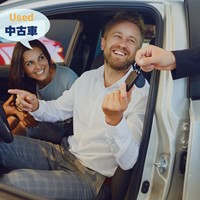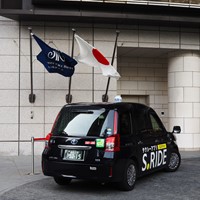Traffic Rules in Japan

Even thought Japan has excellent public transportation, driving does still come in handy, especially during the weekend if you’re going out of town, going somewhere not easily accessible by train or bus, or have some heavy duty shopping to do. As most of the road signs are in Japanese, and there is some variation in usage and rules, it’s important to be aware of traffic rules in Japan. In this article, you will find answers to frequently asked questions about driving in Japan, information on some of the traffic signs and obtaining a driver's license.
We also have many articles covering transportation in Japan including renewing Japanese driver's license, catching a taxi, train etiquette, cycling, etc.

FAQ about Driving in Japan
Here are some basic facts to keep in mind when driving in Japan.
Q: What should you do when you come to a Railroad Crossing?
A: Before passing through a railroad crossing, drivers must stop before the crossing (or behind the near side of the stopping line, if any), and look and listen to check to see if a train is coming. Rolling down the vehicle’s window to improve hearing may be necessary.
Q: What Is the Speed Limit?
A: The general speed limit is 60 km/h (37 mph) except on national divided highways (freeways) where the limit is normally 100 km/h (62 mph). Most Urban areas have a speed limit of 40 km/h (25 mph).
Helpful Articles
・Traffic Violations: Demerit Point System & Ticket Colors
・Driving on Japan’s Highways and Toll Roads
Q: What Side of the Road Does Japan Drive On?
A: All cars in Japan drive on the left side of the road. All cars made in Japan have their driver's seat and steering wheel on their right side.
Q: What is the Legal Driving Age?
A: The legal minimum age at which someone in Japan can drive a car is 18 years old. In case of motorcycles (except for heavy ones), it is 16 years old. Please check the article below for more information.
・Japanese Driver's License Classifications & Their Meanings
Q: Can I Use an International Driving Permit (IDP) in Japan?
A: Driving on an international permit issued according to 1949 Geneva Convention is allowed for up to only one year, even if your permit is valid for longer than that. International driving permits of other conventions are not valid in Japan. Once a year has passed, you must return to your home country for at least three consecutive months before being allowed to drive on an IDP again. For details, please check here. Please check beforehand whether an international driving permit issued in your country is valid for Japan.
Q: Can I drive with my Foreign Driver's License in Japan?
In case of driver's licenses issued by Taiwan, Belgium, Germany, Monaco, Switzerland, and France, you may drive in Japan with such license up to 1 year provided you have a valid Japanese translation. For more details, please check here.

Q: Where Can I Park?
A: In addition to standard parking lots, Japan also provides car parks that make innovative use of space such as the elevator parking lot, where you park your car on a turntable that conveys the cars into multi-level towers. Another type has a low barrier that blocks your car’s wheels until you pay the fee required, which causes the barrier to lower for your car to exit the parking space.
・Parking in Japan: What to Know before Getting on the Road
Traffic Signs in Japan

If you are coming from a country where the steering wheel is on the left side of the car, please keep in mind that just as the steering wheel is on the other side of the car, the traffic signs will be on the other side of the road. This is however not the case with all traffic signs. Be sure to familiarize yourself with some of the more common traffic signs before you get on the road.

Tomare (Stop)
Tomare, meaning “stop” in Japanese, is a common sign you will come across at intersections with no traffic lights. When you see this sign, be sure to stop before the stop line when you reach the intersection. If there is no stop line, stop before reaching the intersection. In both cases, you must yield to vehicles traveling on the crossing road.

No Parking or Stopping/No Parking
Drivers who illegally park and stop their cars are responsible for traffic congestion in neighborhoods, and can also impair road visibility. As this can cause unnecessary traffic, accidents involving pedestrians stepping out from behind parked or stopped vehicles and getting injured in the process is common. Only park or stop your car in legally designated areas.

No U-Turn
U-turns are allowed except where a no U-turn sign is placed. Given Japan’s narrow roadways, particularly in high population areas like Tokyo, attempting a U-Turn on a section of a road where it is prohibited could be potentially quite dangerous.

No Overtaking
On certain sections of the road, you can find signs indicating that swerving to overtake from the right side is strictly prohibited to avoid any danger from blind spots.

Designated Bus Lane (Buses only)
There are designated bus lanes in Japan, usually within a certain time frame and on certain days of the week.
Basic Rules Driving in Japan
Most universal driving rules apply in Japan. For example, drivers must keep left, while pedestrians are advised to keep to the right side of the road. Drivers must also give way to pedestrians. All passengers must wear seatbelts, and if you have children, note that children below six years of age must use a child seat.
・Child Car Seat Safety in Japan
Obtaining a Driver's License in Japan
If you are from one of the countries that has an agreement with Japan regarding licenses for driving, you can get a Japanese driver's license without taking either the driving practical or written tests. The are a number of countries that have such an agreement including Australia, Canada, France, Germany, the United Kingdom, etc. You would need to bring your passport, proof that you have held your license for more than three months in the issuing country, and other required documents.
For those transferring their license from another country that is not a part of the agreement with Japan, you have to take the written and practical tests to get your license. The written test consists of true or false questions that cover knowledge for both manual and automatic cars. You can purchase a book on traffic rules in Japan from Japan Automobile Federation.
The practical driving test course features an S curve, crank course, and a straight speeding zone. Some centers will allow you to book private lessons on the course with an instructor which in turn makes it easier to pass as you are more familiar with the course.
・How to Switch your Driver's License to a Japanese License
・Why is the Practical Driver's License Test in Japan So Challenging?
・English-Speaking Driving Schools in Tokyo

Driving in Japan is Definitely Possible
Getting permission to drive in Japan does not have to be a difficult process. Just be sure to check your options, and whether or not your country is part of the bilateral agreements. Study and get familiar with the traffic signs, especially if you can’t read Japanese, to understand what they say.
If you would like to have a car in Japan, you can either rent, buy or lease one.




















